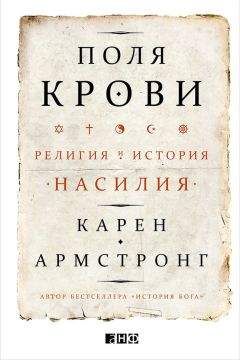121
Lincoln, ‘War and Warriors’, p. 143
Georges Dumézil, The Destiny of the Warrior, trans. Alf Hiltebeitel (Chicago and London, 1969), pp. 64–74
Илиада ХХ 490–494
Илиада ХХ: 495–503; Seth L. Schein, The Mortal Hero: An Introduction to Homer’s Iliad (Berkeley, Los Angeles and London), pp. 145–46
Lincoln, ‘Indo-European Religions’, p. 4
Dumézil, Destiny of the Warrior, pp. 106–07
Илиада IV 482–488
Одиссея XI 488–491. см.: английский перевод в: Walter Shewring, Homer: The Odyssey (Oxford and New York, 1980). [Перевод В. Жуковского. Цит. по: Гомер. Илиада, Одиссея. – М.: Художественная литература, 1967. – Прим. пер.]
James Mellaart, The Neolithic of the Near East (London, 1975), pp. 119, 167, 206–07; O’Connell, Ride of Second Horseman, pp. 74–81
J. N. Postgate, Early Mesopotamia: Society and Economy at the Dawn of History (London, 1992), p. 251.
O’Connell, Ride of Second Horseman, pp. 132–42
Keegan, History of Warfare, pp. 130–31
John Romer, People of the Nile: Everyday Life in Ancient Egypt (New York, 1982), p. 115
Keegan, History of Warfare, pp. 133–35
Yigal Yadin, The Art of Warfare in Biblical Lands, 2 vols (New York, 1963), I, pp. 134–35; Robert Adams, The Evolution of Urban Society: Early Mesopotamia and Prehispanic Mexico (Chicago, 1966), p. 149
Kramer, Sumerian Mythology, p. 123
Ibid., p. 120
Kautsky, Politics of Aristocratic Empires, p. 108; ср. Carlo M. Cipolla, Before the Industrial Revolution: European Society and Economy, 1000–1700 (New York, 1976), pp. 129–30, 151
Robert L. O’Connell, Of Arms and Men: A History of War: Weapons and Aggression (New York, p. 38); Ride of Second Horseman, pp. 100–01; William H. McNeill, The Pursuit of Power: Technology, Armed Force and Society since AD 1000 (Chicago, 1982), pp. 2–3; Schneider, Ancient Mesopotamian Religion, pp. 22–23; A. L. Oppenheim, Ancient Mesopotamia, pp. 153–54; Gwendolyn Leick, Mesopotamia: The Invention of the City (London, 2001), pp. 85–108
Joseph A. Schumpeter, Imperialism and Social Classes: Two Essays (New York, 1955), p. 25: Perry Anderson, Lineages of the Absolutist State (London, 1974), p. 32. (Андерсон П. Родословная абсолютистского государства. – М.: Территория будущего, 2010.)
Anderson, Lineages, p. 31
Kautsky, Politics of Aristocratic Empires, pp. 148–52
Marc Bloch, Feudal Society (Chicago, 1961), p. 298. (Блок М. Феодальное общество. – М.: Издательство имени Сабашниковых, 2003.)
Leick, Mesopotamia, p. 95. Морем «наверху» и морем «внизу» названы соответственно Средиземное море и Персидский залив
Ibid., p. 100
Кодекс Хаммурапи, введение. См. J. B. Pritchard, ed., Ancient Near Eastern Texts Relating to the Old Testament (Princeton, 1969), p. 164. [Цит. по: Хрестоматия по истории Древнего Востока. Ч. I / Под ред. М. А. Коростовцева, И. С. Кацнельсона, В. И. Кузищина. – М.: Высшая школа, 1980. – Прим. пер.]
См. F. C. Frensham, Social Justice in Ancient Israel and in the Ancient Near East (Minneapolis, 1995), p. 193
Кодекс Хаммурапи, заключение; выделено мной. см.: Pritchard, Ancient Near Eastern Texts, p. 178
Marshall G. S. Hodgson, The Venture of Islam: Conscience and History in a World Civilization (Chicago and London, 1974), 3 vols, 1, pp. 108–10
Schneider, Ancient Mesopotamian Religion, pp. 105–06. Смысл и этимология слова «Акиту» не известны; Jacobsen, ‘Cosmos as State’, p. 169
N. K. Sanders, ed. and trans., ‘The Babylonian Creation Hymn’, in Poems of Heaven and Hell from Ancient Mesopotamia (London, 1971), pp. 44–60
Jonathan Z. Smith, ‘A Pearl of Great Price and a Cargo of Yams: A Study in Situational Incongruity’, in Jonathan Z. Smith, Imagining Religion: From Babylon to Jonestown (Chicago and London, 1982), pp. 90–96; Mircea Eliade, A History of Religious Ideas, trans. Willard R. Trask, 3 vols, (Chicago, 1978), 1, pp. 72–76; Sanders, ‘Babylonian Creation Hymn’, pp. 47–51
Smith, ‘Pearl of Great Price’, p. 91
Sanders, ‘Babylonian Creation’, p. 73. [Перевод. В. Афанасьевой. Цит. по: Я открою тебе сокровенное слово… – М.: Художественная литература, 1981. – Прим. пер.]
Ibid.
Ibid., p. 79
O’Connell, Ride of Second Horseman, pp. 141–42
Leick, Mesopotamia, pp. 198–216
A. K. Grayson, Assyrian Royal Inscriptions, 2 vols (Wiesbaden, 1972, 1976), 1, pp. 80–81
H. W. F. Saggs, The Might That Was Assyria (London, 1984), pp. 48–49; Дьяконов И. // Ancient Mesopotamia: Socio-economic history: A collection of studies by Soviet scholars. – Moscow, 1969, pp. 221–22
Grayson, Assyrian Royal Inscriptions, pp. 123–24
Saggs, Might That Was Assyria, p. 62
Ibid., p. 61
Песнь о невинном страдальце, 76. см.: Jacobsen, ‘Cosmos as State’, pp. 212–14. [Перевод В. Шилейко. Цит. по: Ассиро-вавилонский эпос / Сост. В. В. Емельянов. – СПб.: Наука, 2007. – Прим пер.]
Ясна 46. Norman Cohn, Cosmos, Chaos and the World to Come: The Ancient Roots of Apocalyptic Faith (New Haven and London, 1993), p. 77; Mary Boyce, Zoroastrians: Their Religious Beliefs and Practices, 2nd ed. (London and New York), p. xliii (Бойс М. Зороастрийцы. Верования и обычаи. – М.: Наука, 1987.); Peter Clark, Zoroastrians: An Introduction to an Ancient Faith (Brighton and Portland, Oreg., 1998), p. 19
Ясна 30
Boyce, Zoroastrians, pp. 23–24
Lincoln, ‘Warriors and Non-Herdsmen’, p. 153
Ясна 44
Lincoln, ‘Warriors and Non-Herdsmen’, p. 158
Jarrod L. Whitaker, Strong Arms and Drinking Strength: Masculinity, Violence and the Body in Ancient India (Oxford, 2011), pp. 152–53
Ригведа, III 32: 1–4, 9–11. см.: английский перевод: Ralph T. Griffith, The Rig Veda (London, 1992). [Перевод Т. Елизаренковой. Цит. по: Ригведа. Мандалы I–IV. – М.: Наука, 1999. – Прим. пер.]
Edwin Bryant, The Quest for the Origins of Vedic Culture: The Indo-Aryan Debate (Oxford and New York, 2001); Colin Renfrew, The Puzzle of Indo-European Origins (London, 1987); Romila Thapar, Early India: From the Origins to AD 1300 (Berkeley and Los Angeles, 2002), pp. 105–07
Whitaker, Strong Arms, pp. 3–5; Wendy Doniger, The Hindus: An Alternative History (Oxford, 2009), pp. 111–13.
Louis Renou, Religions of Ancient India (London, 1953), p. 20; Michael Witzel, ‘Vedas and Upanishads’, in Gavin Flood, ed., Blackwell Companion to Hinduism (Oxford, 2003), pp. 70–71; J. C. Heesterman, ‘Ritual, Revelation and the Axial Age’, in S. N. Eisenstadt, ed., The Origins and Diversity of Axial Age Civilizations (Albany, NY, 1986), p. 398
J. C. Heesterman, ‘Ritual, Revelation and the Axial Age’, pp. 396–98; Heesterman, The Inner Conflict of Tradition: Essays on Indian Ritual, Kingship and Society (Chicago and London, 1985), p. 206; John Keay, India: A History (London, 2000), pp. 31–33; Thapar, Early India, pp. 126–30
Ригведа, 1.32.5
Шатапатха Брахмана (ШБ), 6.8.11. см.: английский перевод в: J. C. Heesterman, The Broken World of Sacrifice: An Essay in Ancient Indian Religion (Chicago and London, 1993), p. 123
Ригведа, 8.16.1; 8.95.6; 10.38.4
Whitaker, Strong Arms, pp. 3–5; 16–23; Catherine Bell, Ritual Theory, Ritual Practice (New York, 1992), pp. 180–81, 221
Renou, Religions of Ancient India, p. 6; Witzel, ‘Vedas and Upanishads’, p. 73
Whitaker, Strong Arms, pp. 115–17
Ср. Ригведа, 2.22.4
Ригведа, 3.31; 10.62.2
Witzel, ‘Vedas and Upanishads’, p. 72
Doniger, Hindus, p. 114
Heesterman, ‘Ritual and Revelation, ’ p. 403
ШБ 7.1.1.1–4, см.: Mircea Eliade, The Myth of the Eternal Return or Cosmos and History, trans. Willard R. Trask (Princeton, 1974), pp. 10–11
Майтраяни-самхита, 4.2.1.23.2; см.: Heesterman, Broken World, pp. 23–24; 134–37
ШБ 2.2.2.8–10; Heesterman, Broken World, p. 24
Georges Dumézil, The Destiny of the Warrior, trans. Alf Hiltebeitel (Chicago and London, 1970), pp. 76–78
John H. Kautsky, The Political Consequences of Modernization (New Brunswick and London, 1997), pp. 25–26
Whitaker, Strong Arms, p. 158
Louis Renou, ‘Sur la Notion de “brahman” ’, Journal Asiatique, 237 (1949); Jan Gonda, Change and Continuity in Indian Religion (The Hague, 1965), p. 200
Ригведа, 1.164.46. Гарутмант – это солнце
Ригведа, 10.129. 6–7
Jan Gonda, The Vision of the Vedic Poets (The Hague, 1963), p. 18
Renou, Religions of Ancient India, pp. 220–25; R. C. Zaehner, Hinduism (London, New York and Toronto, 1962), pp. 219–25
Ригведа, 10. 90
Ibid., 10.90. [Перевод Т. Елизаренковой. Цит. по: Ригведа. Мандалы IХ – X. – М.: Наука, 1999. – Прим. пер.]




